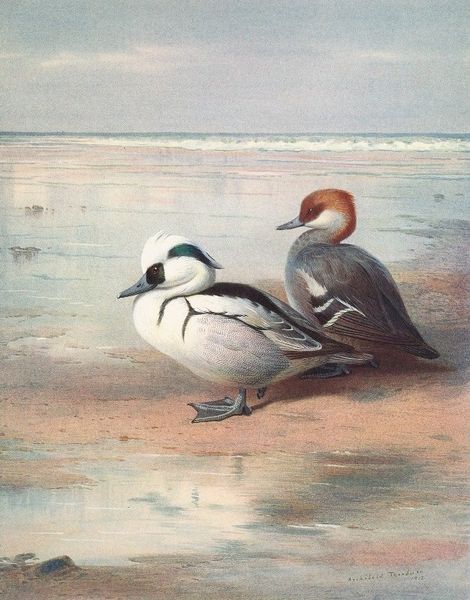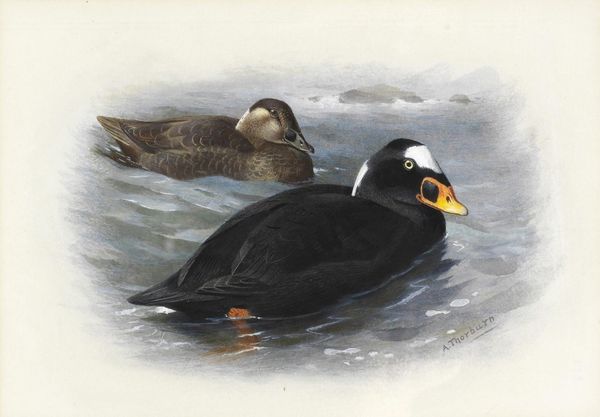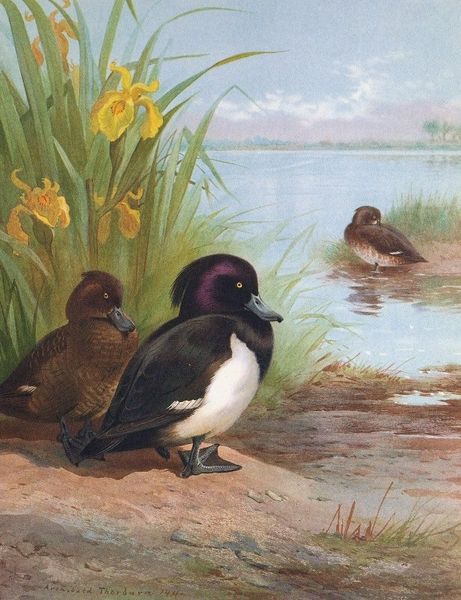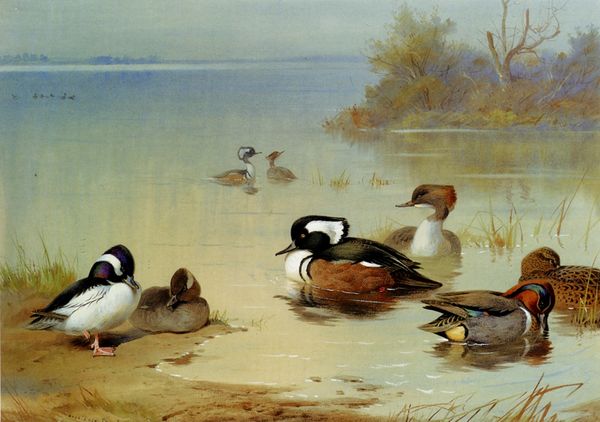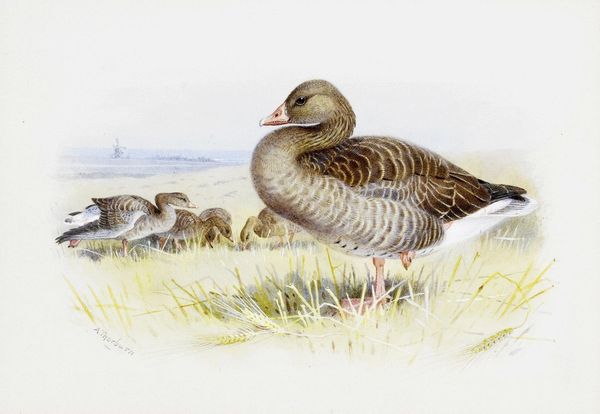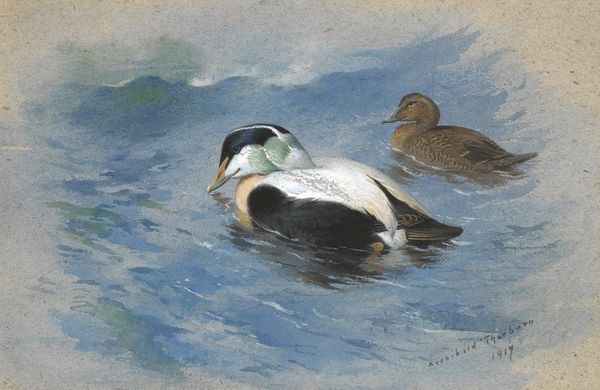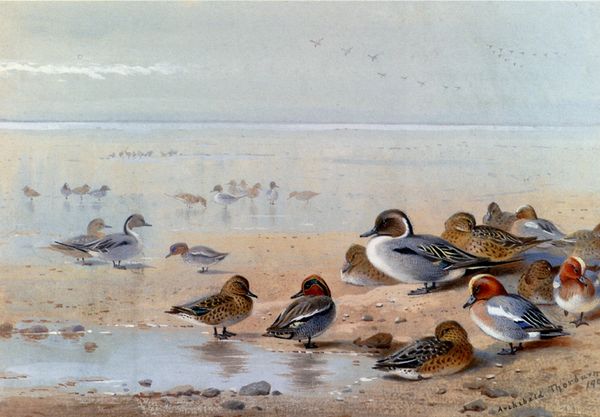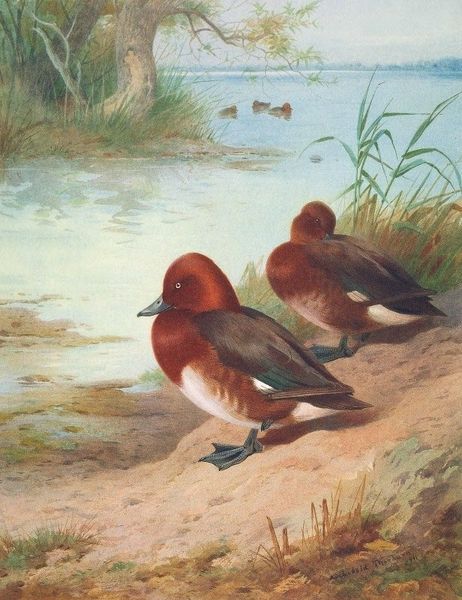
painting, watercolor
#
painting
#
landscape
#
watercolor
#
animal portrait
#
naturalism
#
watercolor
Copyright: Public Domain: Artvee
Curator: Archibald Thorburn created this delicate watercolor titled "Long-Tailed Duck" in 1913. Editor: It's striking. The mood is very tranquil; those soft pastel shades evoke a kind of wistful calm. Curator: Thorburn, known for his meticulous depictions of birds, employs watercolor to achieve a naturalistic likeness. We see here how the materiality of the paint interacts with the surface of the paper to capture the varied textures of the ducks' plumage and the shoreline grasses. Editor: Beyond just accurate depictions, there’s a story embedded here, isn't there? Ducks often signify adaptability, and with one duck alert and another resting, they could represent awareness and peace in a landscape that evokes serenity and perhaps even a slight melancholic sense. The Long-tailed duck specifically, with its elegance, might even be seen as representing resilience given it's survival in northern climates. Curator: Certainly, the Long-Tailed Duck is a migratory bird. Thorburn made quite a living from studies like this, and many would be produced as prints to illustrate manuals of ornithology, and decorative pictures for homes that demonstrated knowledge and affinity with nature. This piece gives clues to a very specific understanding of place, ecology, and consumer habits. Editor: It also feels representative of that Edwardian-era romanticism tied to the natural world—almost an echo of the Pre-Raphaelites’ deep dive into detail. The symbolism could resonate on many levels, including humanity's longing for a simpler life more attuned to nature’s rhythms. Curator: It is fascinating how, with such sparse material, Thorburn implies the extensive ecosystems upon which these ducks—and ourselves—depend. Perhaps we can view this painting not just as a work of art, but also a document evidencing shifting social attitudes to the environment in the early twentieth century. Editor: Indeed. Viewing it through the lens of symbolism adds depth to our experience; each brushstroke becomes more than mere pigment. Curator: Absolutely; and I think attending to the specific methods by which such imagery became common gives a deeper meaning for us today, as it once would have for those original Edwardian consumers.
Comments
No comments
Be the first to comment and join the conversation on the ultimate creative platform.

